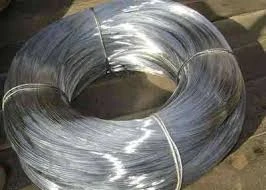Welding Methods for Durable Cattle Panels in Agricultural Applications
Understanding the Benefits and Techniques of Welding Cattle Panels
Welding cattle panels is an efficient and effective way to create robust enclosures for livestock. Cattle panels are pre-fabricated grids, usually made of heavy-duty steel, designed to be used as fencing for farms and ranches. By welding these panels together, farmers can ensure the safety of their cattle while also optimizing their use of space. In this article, we will explore the benefits of welding cattle panels, the techniques involved, and some considerations for those looking to take on this project.
Benefits of Welding Cattle Panels
1. Durability One of the primary benefits of welding cattle panels is the durability it provides. Welded joints create a strong bond between panels, making the structure resistant to wear and tear from harsh weather conditions or animal activity.
2. Cost-Effectiveness While the initial investment for materials and equipment may be high, welded cattle panels can save money in the long run. Their strength means they will not need frequent repairs, and their longevity reduces the need for replacement.
3. Customizability Welding allows for a customized fit for any farm layout. Farmers can create enclosures and gates tailored to their specific needs, accommodating various types of livestock and terrain.
4. Enhanced Security A welded panel fence provides better security than traditional fencing methods. Welded panels are harder for animals to push over or break, ensuring that livestock remains safe within their designated areas.
5. Efficiency of Installation Once the decision is made to weld, the installation process becomes faster. Pre-fabricated panels can be quickly assembled on-site, and the welding process minimizes the need for additional components, such as bolts or brackets.
Techniques for Welding Cattle Panels
To successfully weld cattle panels, it is essential to utilize the right techniques and tools. Here are the steps to follow
welding cattle panels

1. Gather Materials Start with high-quality cattle panels and choose the appropriate metal rods for welding. A MIG (Metal Inert Gas) welder is recommended for this type of project due to its ease of use and effectiveness.
2. Prepare the Area Ensure the workspace is clean and free of any debris. This will minimize distractions and potential hazards during the welding process.
3. Cut and Shape Measure and cut the cattle panels according to the desired size of the enclosure. Ideally, use a cutting tool that can deliver clean edges for a better welding surface.
4. Fit the Panels Together Align the panels to ensure they fit snugly, as gaps can weaken the structure. If creating a gate, ensure that it swings freely without obstruction.
5. Weld the Panels Begin welding at one corner and continue to the next, ensuring that each joint is secure. Maintain a consistent speed and technique to create strong, uniform welds. Be mindful of your safety gear, including gloves and a mask, to protect against sparks and fumes.
6. Inspect the Welds Once all welding is complete, inspect each joint for strength and consistency. Repair any weak points as necessary.
7. Finish the Structure Clean any slag or excess material from the welds, and consider applying a protective coating to prevent rust and corrosion.
Considerations for Welding Cattle Panels
Before embarking on a cattle panel welding project, consider local laws and regulations regarding livestock fencing. Additionally, assess the specific needs of your livestock to determine the height and strength required for your panels. Finally, ensure you have the right tools and skills for welding to achieve the best results.
In conclusion, welding cattle panels is an excellent method for creating durable, cost-effective, and secure enclosures for livestock. By following the proper techniques and considering the unique needs of your farm, you can provide a safe environment for your cattle while utilizing resources efficiently. Whether you are a seasoned welder or a beginner, this project can substantially enhance your farming operation.
-
Space-Saving Chain Fence Hacks Vertical Gardening with Cyclone MeshNewsJul.16,2025
-
Innovations in Iron Nail Wire Production for Modern ConstructionNewsJul.16,2025
-
Creative Uses of Wire Netting Fence in Modern Landscape DesignNewsJul.16,2025
-
Barbed Wire Fence Innovations in Anti-Climb TechnologyNewsJul.16,2025
-
Architectural Uses of Umbrella Nails for Aesthetic Roof DesignsNewsJul.16,2025
-
Architectural Uses of Razor Barbed Wire in Secure Urban DesignNewsJul.16,2025




